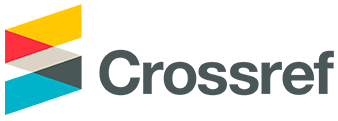ARTS STUDENTS’ CREATIVITY IN WRITING SCIENTIFIC ARTICLES THROUGH CONCEPT MAPPING
Abstract
Keywords
References
Allison, A. (2006). Creativity, students’ academic writing, and EAP: exploring comments on writing in an English language degree programme. Journal of English for academic purposes 3/3: 191-209.
Alwasilah, S. S. (2015). Improving creative writing ability through multi-strategy learning. International Journal of Education, 8(2), 138-145. DOI: https://doi.org/10.17509/ije.v8i2.5320.
Amabile, T. M. (2017). In pursuit of everyday creativity. The Journal of Creative Behavior, 51(4), 335-337. DOI: 10.1002/jocb.200.
Astiantih, S., & Akfan, S. S. (2023). Utilizing Concept Maps to Enhance Students’ Writing Skills, JOLLT Journal of Languages and Language Teaching, 11(3), pp. 433-446. DOI: https://doi.org/10.33394/jollt.v%vi%i.7993.
Beghetto, R., & Kaufman, J. (2014). Classroom contexts for creativity. High Ability Studies. 25(1). 53-69. DOI: 10.1080/13598139.2014.905247.
Bailey, S. (2003). Academic writing: A handbook for international students. Second edition. New York: Routledge.
Baucus, M. S., Norton, W. I., Baucus, D. A., & Human, S. E. (2008). Fostering creativity and innovation without encouraging unethical behavior. Journal of Business Ethics, 81(1), 97-115. https://doi.org/10.1007/s10551-007-9483-4.
Caruth, G. D. (2018). Student engagement, retention, and motivation: assessing academic success in today’s college students. Participatory Educational Research, 5(1), 17–30. https://doi.org/10.17275/per.18.4.5.1.
Cooper, Y., & Zimmerman, E. (2020). Concept mapping: A practical process for understanding and conducting art education research and practice. Art Education, 73:2, 24-32, DOI: 10.1080/00043125.2019.1695478. DOI: 10.1080/00043125.2019.1695478.
Creswell, J. W & Creswell, D. J. (2018). Research design qualitative, quantitative, and mixed methods approaches fifth edition. SAGE Publications, Inc.
Darmalaksana, W., & Busro., B. (2021). Akselerasi publikasi ilmiah mahasiswa: studi kasus WPAJ HMJ IAT UIN Sunan Gunung Djati Bandung. Ijois: Indonesian Journal of Islamic Studies, 2(2), 139–157. DOI: https://doi.org/10.59525/ijois.v2i2.35.
Heinert, J. (2017). Peer critique as a signature pedagogy in writing studies. Arts and Humanities in Higher Education, 16(3), 293-304. DOI: https://doi.org/10.1177/1474022216652767.
Hernawan, Anshari, D., Syihabuddin, & Mulyati Y. (2023). Exploring the profile of scientific article writing ability among tertiary students: insights from five institutions in Indonesia. International Journal of Education. 16(2), 157-166. https://doi.org/10.17509/ije.v16i2.57357.
Kiss, T. & Guo, X. (2020). Creativity and academic writing. SPELT Quarterly. 35(1), 2-10.
Leavy, P. (2017). Research design quantitative, qualitative, mixed methods, arts-based, and community-based participatory research approaches. New York, Ny: The Guilford Press.
Malley, A. & Kiss, T. (2018). creativity and english language teaching: from inspiration to implementation. London: Palgrave Macmillan.
Ohio Department of Education. (2007). Partnership for 21st Century Skills-Core Content Integration. Retrieved January 5, 2024, from https://www.marietta.edu/sites/default/files/documents/21st_century_skills_standards_book_2.pdf.
Pineteh, E. A. (2014). The academic writing challenges of undergraduate students: A South African case study. International Journal of Higher Education, 3(1), 12–22. https://doi.org/10.5430/ijhe.v3n1p12.
Pujiriyanto, 2021. Peran guru dalam pembelajaran abad 21. Modul PPG tahun 2021.
Rababah, L. M., Abdul, M., & Malek, M. N. (2013). Arts and design studies the level of creativity in english writing among jordanian secondary school students. Arts and design studies. 10. 25-29.
Raoofi, S., Binandeh, M., & Rahmani, S. (2017). An Investigation into writing strategies and writing proficiency of university students. Journal of Language Teaching and Research, 8(1), 191–198. http://doi.org/10.17507/jltr.0801.24.
Runco, M. (2014). Creativity: theories and themes: research, development, and practice 2nd editions. Oregon: Academic Press.
Simonton, D. K. (2012). Taking the U.S. Patent Office Criteria Seriously: A Quantitative Three-Criterion Creativity Definition and Its Implications, Creativity Research Journal, 24:2-3, 97-106, DOI: 10.1080/10400419.2012.676974.
Strongman, L. (2013). Academic writing. London: Cambridge Scholars.
Suharto, A. W. B. (2023). Improving the Quality of Students’ Journal Articles Using Creative Writing to Develop Ideas, Citations, and Thesis Statements at UIN SAIZU Purwokerto. Academic Journal of Interdisciplinary Studies, 12(2), 169-178. DOI: https://doi.org/10.36941/ajis-2023-0040.
Sullivan, G. (2014). The art of research. Studies in Art Education, 55(4), 270–286. DOI:10.1080/00393541.2014.11518937.
Trilling, B., & Fadel, C. (2009). 21st century skills: Learning for life in our times. Jossey-Bass/Wiley.
Tse, S. K. & Shum W. C. (2000).Teaching Chinese language writing in secondary school:Theory and design. Hong Kong: Hong Kong Education Department.
DOI: https://doi.org/10.17509/ije.v18i2.68625
Refbacks
- There are currently no refbacks.
Copyright (c) 2025 Ayu Niza Machfauzia, Anik - Juwariyah, Retnayu Prasetyanti Sekti

This work is licensed under Creative Commons Attribution-ShareAlike 4.0 International License.




.jpg)





